


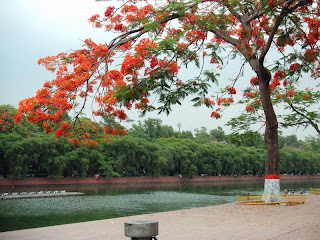




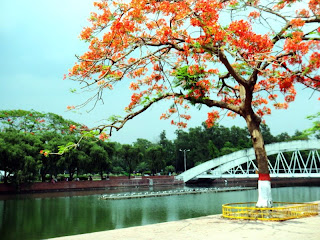






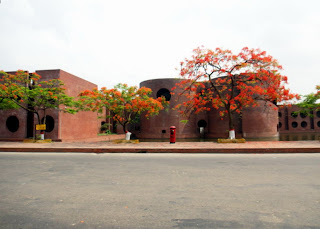




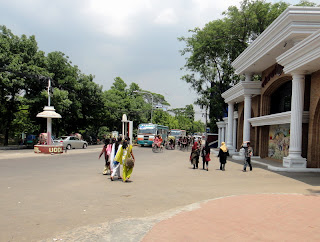
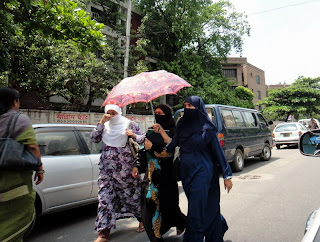
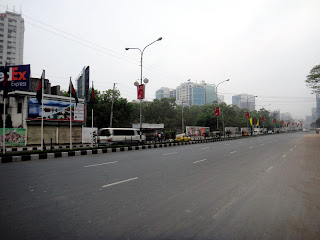

























































The nation celebrated the Pahela Baishakh, the first day of the Bangla Calendar 1418, on Thursday 14 April 2011 amid traditional fanfare and festivity.
People from all walks of life dressed in traditional clothes pour into the streets, parks and open spaces across the capital and elsewhere in the country to welcome the new year.
The major celebration points in the capital city included Ramna Park, Suhrawardy Udyan, Shahbagh crossing, Dhaka University campus, BUET campus and Dhanmondi Lake.
The biggest venue of the celebration was set at the Ramna Batamul where cultural organisation ‘Chhayanaut’ performed of Tagore's song, Kazi Nazrul Islam and others. They are holding Pahela Baishakh programme in Dhaka since 1965.
The colourful procession, named ‘Mongol Shobhajatra’ was organised by the students of the Institute of Fine Arts of Dhaka University from its premises. They are performing since ‘80s. The procession featuring replicas of tiger, cat, owl, tortoise, croc, elephant and colourful masks symbolizes triumph of good over evil.
The Dhaka University Bangla department held a cultural programme in front of the arts faculty.
BUET held a colourful procession in their campus with replicas and masks from their campus. Presentation of a frog crawling down the Architecture Dept. bldg is impressive.
Traders in Old Town of Dhaka open new ledgers ‘hal khata’. They treat their clients to sweetmeats, a custom dating back from the days of the Emperor Akbar.
Makeshift fairs, cultural performances and celebration programmes were organised by different organisations across the country.
In order to streamline tax collection, Emperor Akbar ordered a reform of the calendar. Accordingly, Amir Fatehullah Shirazi, a renowned scholar of the time and the royal astronomer, formulated a new calendar following the harvesting season when the peasantry would be in a relatively sound financial position. The Calendar was based on the Persian model. Though introduced in 1584 AD, Akbar had the calendar backdated to start on 21st of March 1556 AD which was the year he had ascended the throne. This was the year 963 in the Hijri era.
This new calendar initially came to be known as the Harvest Calendar, or ‘Fosli Shon’ and introduced the tradition of celebrating the Bangla New Year in relation to closing of the annual tax collection.